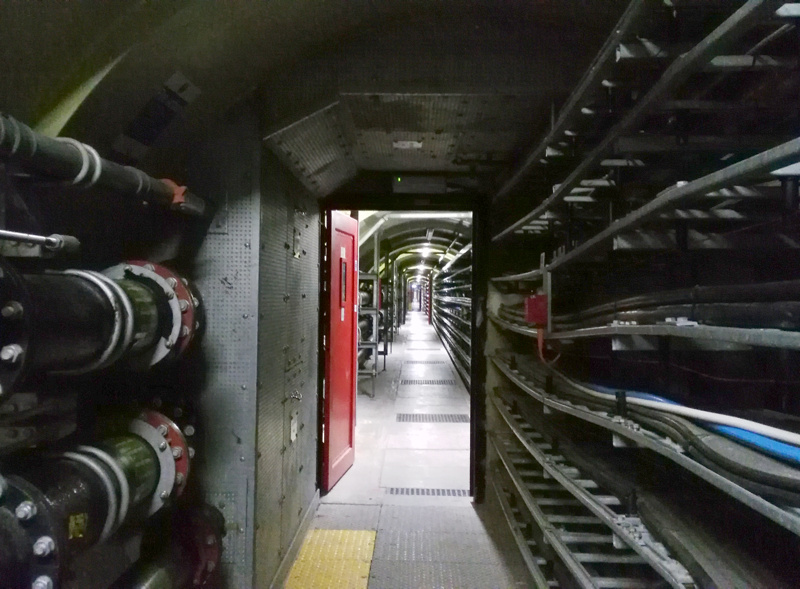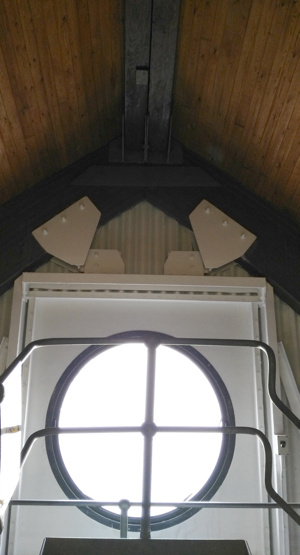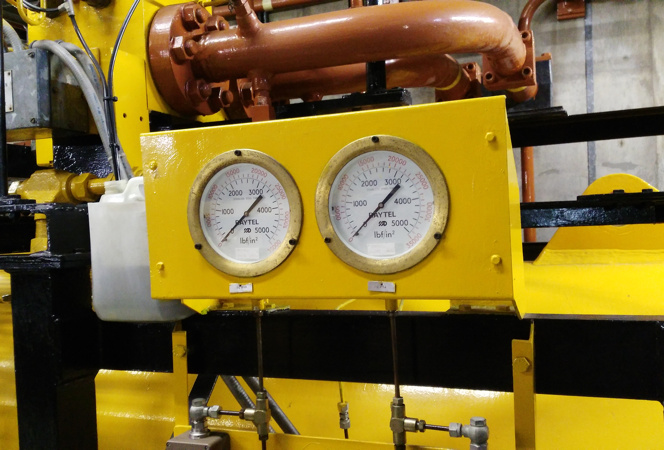
I was recently able to have a behind-the-scenes tour of the huge Thames Barrier structure in east London, thanks to the IET London branch – I’m not a member of the IET (although I used to be) but spotted a tweet from them advertising the tour, so was able to sign up.
As an “engineering” tour, we were able to get right onto the barrier itself, onto one of the “piers” in the middle of the river. Accessing this is fairly involved. The operational site is under very high security indeed, as befits the importance of the barrier during a flood event and the impact that an uncontrolled flood would have on various critical parts of central London, including the Canary Wharf financial district and the South Bank. Once in, getting to the pier involves crossing a short bridge over the first barrier section that is in fact completely dry at low tide) and then accessing one of two tunnels that run almost completely underneath the Thames, with stairs (for the west tunnel) or lifts (for the east tunnel) linking to the piers themselves. The two tunnels are completely separate from each other, for redundancy/safety reasons, so if one of the tunnels was breached, full access to all the piers would still be possible. The tunnels are fairly small, they have reinforced rings like a tube tunnel, but are quite a bit smaller, and contain numerous ducting cables and pipes. They are dead straight, so looking down one makes for quite an eye-catching vista.

 Each pier has two “hull like” buildings which are silvery on the outside, but surprisingly made of wood on the inside. The smaller one houses the top of the aforementioned lift shafts, while the larger one houses the machinery for rotating the huge barrier pieces. Normally, a close or open event takes a couple of hours – in fact, the barrier is quite capable of closing in a couple of minutes, but this is never used, partially because tidal events are fairly predictable with around 24 hours notice (being based on tide, wind direction, upstream flow and air pressure) and partially because a sudden closure/opening would have a negative impact on the ecosystem of the river – likely impacting flora/fauna in the river, and structures on the the banks (I presume this is from sudden changes in water salinity, level or pressure).
Each pier has two “hull like” buildings which are silvery on the outside, but surprisingly made of wood on the inside. The smaller one houses the top of the aforementioned lift shafts, while the larger one houses the machinery for rotating the huge barrier pieces. Normally, a close or open event takes a couple of hours – in fact, the barrier is quite capable of closing in a couple of minutes, but this is never used, partially because tidal events are fairly predictable with around 24 hours notice (being based on tide, wind direction, upstream flow and air pressure) and partially because a sudden closure/opening would have a negative impact on the ecosystem of the river – likely impacting flora/fauna in the river, and structures on the the banks (I presume this is from sudden changes in water salinity, level or pressure).
The larger pier building also has an attractive circular window, facing upstream. From the river, it is quite a distinctive feature of the barrier as you approach it. The circular shape again is a play on the barrier piers having a boat theme.
The equipment in the piers is large and impressive. Some of it looks pretty old – the Thames having been built in the 1980s but designed in the 1970s, based on 1960s technology that had to be “proven” for a decade before, so harking back to the 1950s. But it is kept in great working order and does the job well – which is just as well, as the barrier had to close during the Spring 2014 floods nearly 50 times – almost as many times as it had closed in the preceding 30 years.
Anyway, it was a fascinating tour, and thanks to the IET London branch for organising. The tour guides were retired engineers who had worked on the barrier itself for many years, so it was very informative visit.
